by John Clayson
1. 1874-1886
Grantham Yard was one of three new signal boxes opened at Grantham during 1874 and 1875. Government legislation and regulation relating to railway safety, in particular the requirement for interlocking between points and signals, meant that many more signal boxes were being built at main line stations such as Grantham, where increasing speeds and more complex track layouts increased the risk of collision.
Opened on 19th January 1874, the 40 levers at Grantham Yard signal box brought together the operation of the points and signals at the south end of the passenger station. At this time the Yard Box controlled:
- the Up Main and the Down Main lines at the south end of the station;
- on the western side, connections between the the Western platform, then known as the Nottingham platform, the carriage sidings and and the Main lines;
- on the eastern side, north-facing connections between both Main lines and the north end of the goods yard. At the time this was the principal railway goods facility at Grantham, being adjacent to the town and with sidings into Hornsby's engineering works;
- two short sidings, engine spurs, for locomotives being prepared to take over southbound trains.
The principal lines of communication at a signal box are with the neighbouring boxes in each direction along the railway. The next box to the south of the Yard Box was Grantham South situated about 500 yards away, which opened on the same day as the Yard Box. At first, in 1874, the next signal box to the north was Grantham Junction box which was at the convergence of the line from Nottingham, about ¾ mile north of the station. On 26th October 1875, however, the first Grantham North signal box opened, and it took over from Grantham Junction as the box next to the north of Grantham Yard.
When the Yard Box opened it was soon recognised that a high level of competence was essential for its operation. In October 1875 Captain Tyler of the Board of Trade, inspecting the completed new arrangements between Essendine and Grantham, wrote of the Yard cabin:
I would take the opportunity of observing that as this is a very important cabin, at which the work is incessant, it is desirable that the Signalmen should be kept on duty for 8 hours only, instead of 12 hours, at each turn of duty.
In those days the duration of a Signalman's shift at most signal boxes on the GNR was 12 hours. Main line railway signalling in the busiest boxes had become an intensive activity, highly demanding of the Signalmen both mentally and physically. The work required the full concentration of the men over the entire length of their shift. The Board of Trade, responsible for railway safety on behalf of the public, was lending its weight to a campaign, begun in the 1860s, to make 8-hour, 3-shift working normal practice in busy main line signal boxes.
2. 1886-1903
A new Up Goods line had been opened from Grantham South box to Great Ponton in 1874, and onward to High Dyke in 1882. This relieved the Up Main line of slow mineral and goods trains for the five-mile climb to Stoke Tunnel. In 1886 this Up Goods line was extended back from Grantham South to Grantham Yard. From then until the Yard Box closed in June 1971 one of the main duties of its signalmen was to divert most southbound mineral trains, and many goods trains, from the Up Main line to the Up Goods line to allow them to be overtaken by faster traffic.
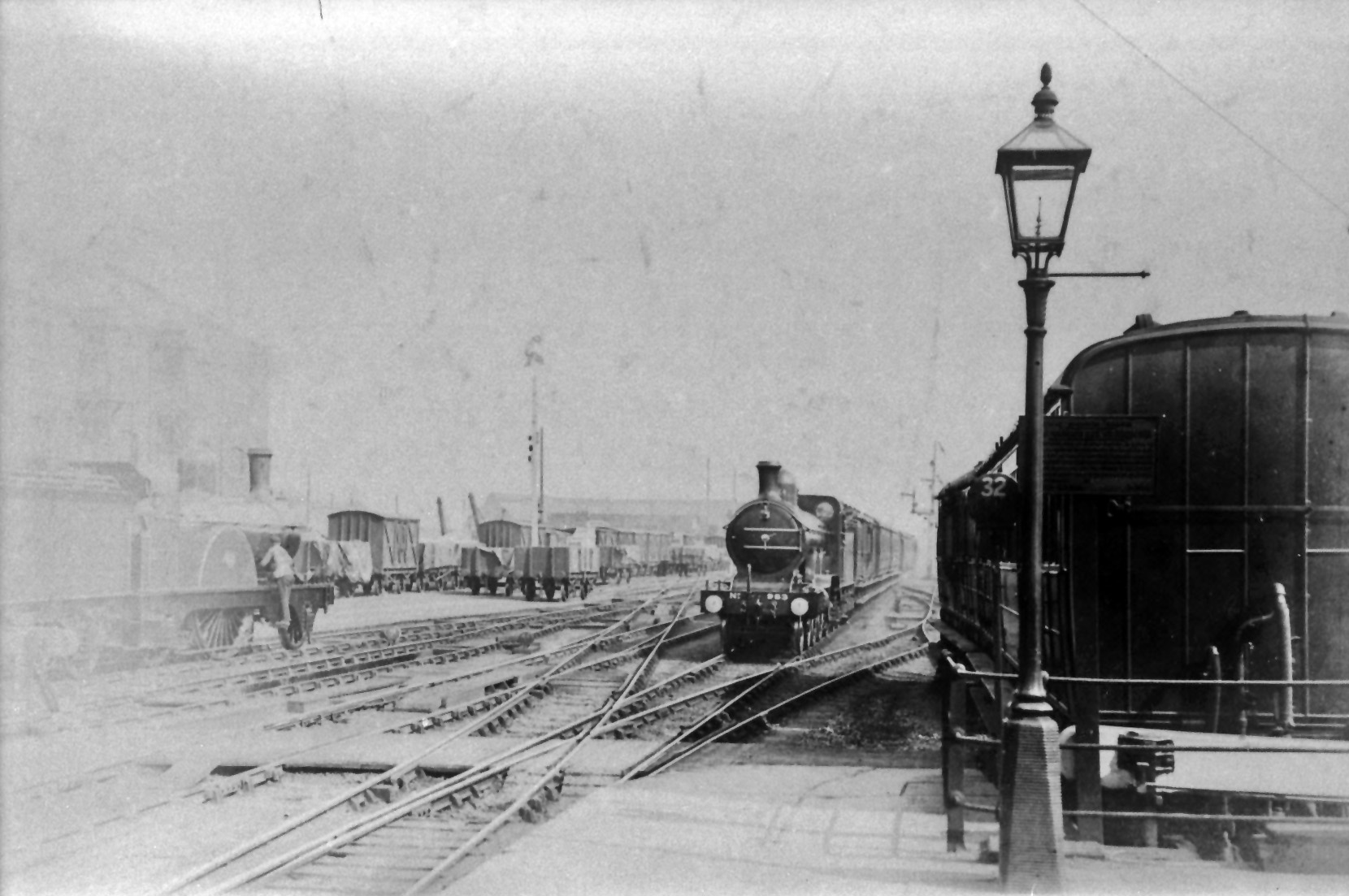
On the left are the two locomotive spurs, with shallow pits to assist inspection and oiling round, where locomotive No. 877 is waiting to take over a southbound passenger train.
To the left of the approaching northbound express is a series of crossings which link, in receding order, the Down and Up Main lines to the Up Goods line and the goods yard sidings.
The northbound express is approaching on the Down Main line under clear signals, the upper arm controlled by the Yard Box, the lower by the North Box.
In the shadow of the coaches on the right is a spindle-mounted disc signal to control shunting movements from the Down Main platform across the connection to the right. It has '32' picked out in white paint - the number of the lever in the Yard Box which operated it.
The dock in which the coaches are standing was one of two short sidings, long-standing features of the layout where coaches or vans could be kept in readiness for adding to northbound trains.
Photograph by Rev. T.B. Parley from the John Tatchell Collection of the Historical Model Railway Society (HMRS).
3. 1903-1940s
In 1903 a new Down Slow line was opened between Grantham South and the Western platform, its approach to the station being under the control of the Yard Box. This required more capacity at Grantham Yard and the lever frame was extended (or possibly replaced) to provide 50 levers.
Here is a first-hand description of how locomotives were changed on the southbound 13-coach Flying Scotsman at the Yard Box.
We pulled into Grantham just about 'right time' and Father and I immediately alighted to watch the change of engines which took three minutes. The fresh engine was waiting in the siding and the train engine ran forward to allow the fresh engine to back onto the train, after which the other engine backed into the siding to await the opportunity to cross over the running lines and go on shed.
Within five minutes we were away again, on time, and the fresh engine did not slip as it took us up the 1 in 200 to Stoke Tunnel...
[From More Reminiscences by Joseph Traxler printed in the Newsletter of the Great Northern Railway Society (later Great Northern News) No.7, July 1982, page 14. The date of the journey is not recorded. The locomotive which brought the train into Grantham was an Ivatt 'Large Atlantic', which had itself taken over from an NER 'Atlantic' (4-4-2) locomotive at York. This places the trip in the first quarter of the 20th century]
4. 1940s-1965
At some time between 1944 and 1954 one of the two short spurs into the dock at the south end of the Down platform was removed.
At some time between 1949 and 1954 the north-facing connection between the Up (east) goods yard and the Down Main and Up Main lines was removed. After that time the name 'Yard Box' was an anachronism because it controlled no connections with the goods yard (the remaining connections between the running lines and the Up side goods yard were at the South Box).
In the 1950s the use of diesel multiple units (known by Grantham railway staff as railcars) on local trains, along with reductions in local services, reduced the use made of the carriage sidings. Also from the late 1950s, with the introduction of diesel electric locomotives on main line services, the intensive routine of locomotive changes rapidly tailed off. It had been a tradition at Grantham since the 1860s.
5. 1965-1971
The rundown of passenger and freight rail services across Britain from the mid-1960s led to rationalisation of track and signalling around Grantham. Higher speeds on the main lines demanded the elimination of as many points and crossings as possible to reduce maintenance. At the same time, power signalling technology enabled the remote control of points and signals over a wide area from electronic switch control panels. The writing was on the wall for traditional mechanical signal boxes, especially those on intensively operated high speed main lines.
Here are the stages of rationalisation and modernisation as they affected Grantham Yard box over this period until it closed in 1971:
- January 1965 saw the removal of the multiple 'ladder' crossover which linked the Western platform with the Up Main and Up Goods lines, crossing the Down Main line en route. It had probably been a feature of the layout controlled by the Yard Box since it opened in 1874. Also taken out of use was the Down Slow to Down Main crossover and with it the second of the short spurs into the platform dock;
- in January 1969 the number of connections from the carriage sidings into the Down Slow line as it approached the Western platform was reduced to one;
- in February 1969 the Up Goods line was upgraded for use by passenger trains (if required) as far as Great Ponton and was renamed the 'Up Slow';
- in April 1970 Grantham Yard box ceased to signal the Down Main line, which was worked between Grantham South and Grantham North boxes;
- On 27th June 1971 Grantham Yard box closed. Control of the junction points for the Up Slow line passed to Grantham South and the carriage siding connection to the Western platform was taken out of use.
Although Grantham Yard signal box was no longer an operational entity, its building was taken over to be adapted for the installation of an electronic switch control panel that, in February 1972, would take over the signalling of the entire Grantham area. It became 'Grantham' signal box, whose story will be told on a separate page.
_______________________________________________________________________
6. Photographs
The following series of photographs illustrates some of the developments at Grantham Yard signal box described above.
The Up Main Line
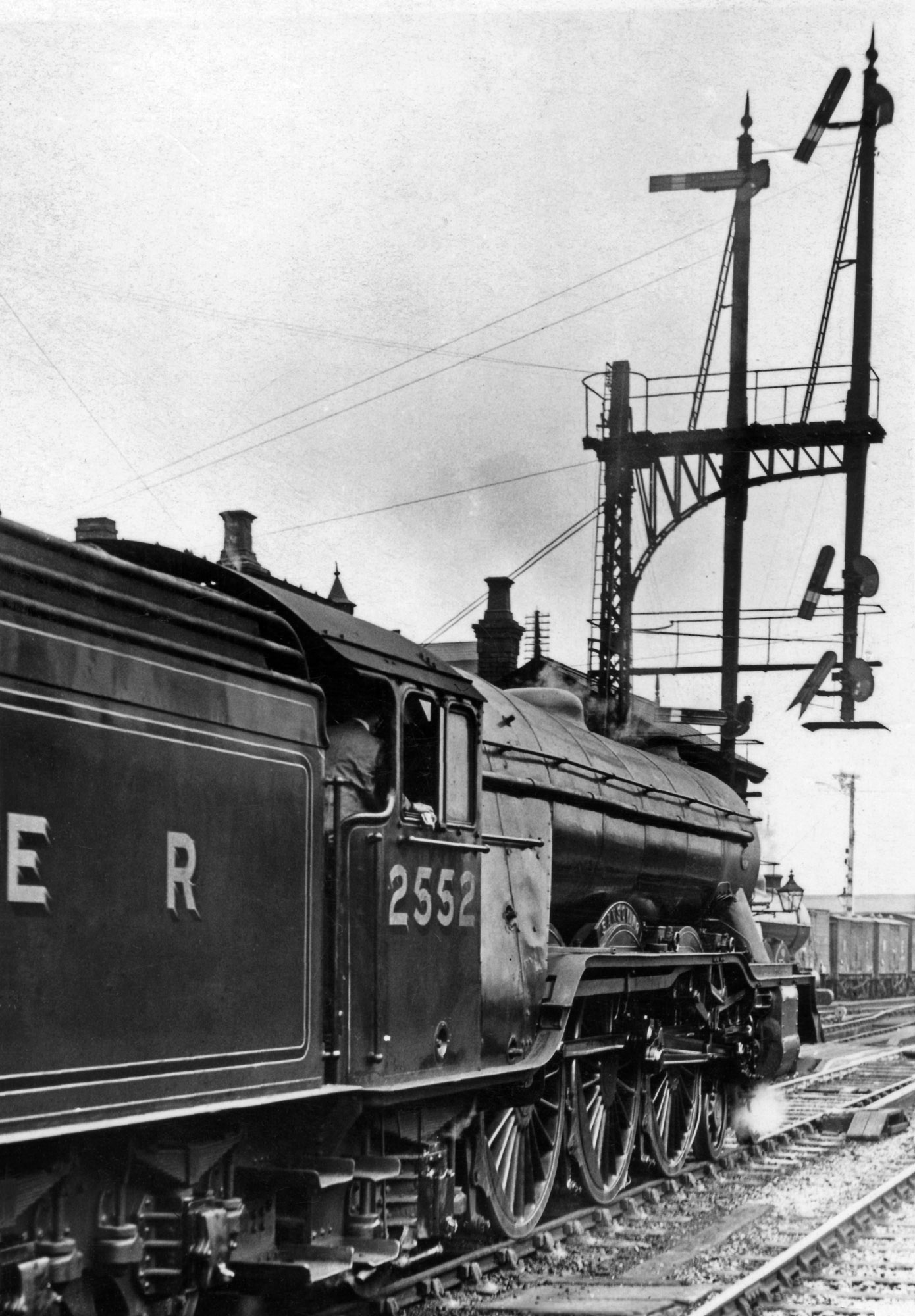
The signal shows 'clear' for the Main line into and through the section controlled by Grantham South box - the lowest arm, with the vee end, is the South Box distant signal. The two high-level arms are 'co-acting' with the corresponding main arms beneath them. Signals had to be visible from a distance to give drivers time to respond, and the high-level arms and their lamps could be seen over the staion footbridge from the footplate of an approaching train . They are also larger in size, to aid sighting from a distance.
The signals on the left relate to the Up Goods line, which diverges to the left just beyond the platform. They were positioned at a lower level because it was the less important route.
There are several sturdy stays to support the overhanging weight of the bracket and its equipment.
This scene dates from the late 1920s or the 1930s. In the late 1930s or the 1940s the GNR 'somersault' signal arms were replaced by modern upper quadrant arms.
Photograph by courtesy of Graham Cloxton.

LNER upper quadrant signal arms have replaced the original GNR somersault arms of the Yard Box home signal, and the decorative post finials have been removed in favour of simple caps. At ground level, the connection from the East (Up side) Goods Yard remains in place though it appears to be little used.
The original entrance to the working floor of the Yard Box used an external staircase to the upper door in the south end of the box, seen clearly here. By this time the box was accessed by a staircase at the rear which led to a door at the far end of the back wall.
No. 62822 was something of a ‘celebrity’ locomotive, being the last to remain in service of an Edwardian design by Henry Ivatt for the Great Northern Railway which performed very successfully on express services on the southern end of the East Coast Main Line until the 1930s. No. 62822 last ran on Sunday 26th November 1950 when it hauled the ‘Ivatt Atlantic Special’ from King’s Cross to Doncaster. Thereafter it entered the works at Doncaster for scrap because another example of the class had already been preserved, GNR No. 251, which today is part of the National Railway Museum’s collection.
With thanks to John R Short for permission to use the photograph.
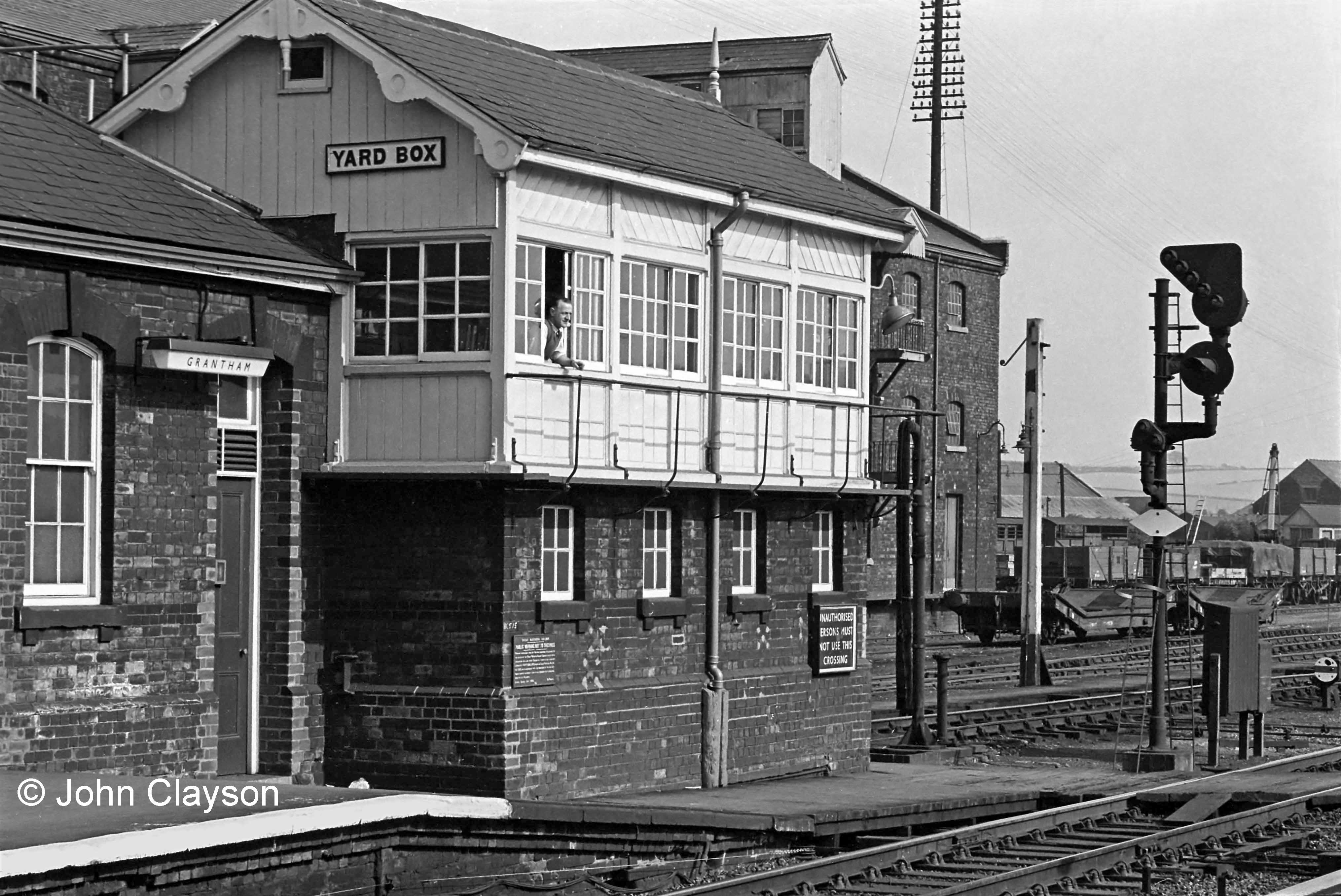
The signalman at the window is Jock Drummond
Photograph taken on 5th September 1963 by Cedric A. Clayson.
To preserve the advance sighting provided by the high level semaphore arms and lamps, a banner repeating signal was placed near the north end of the Up platform.
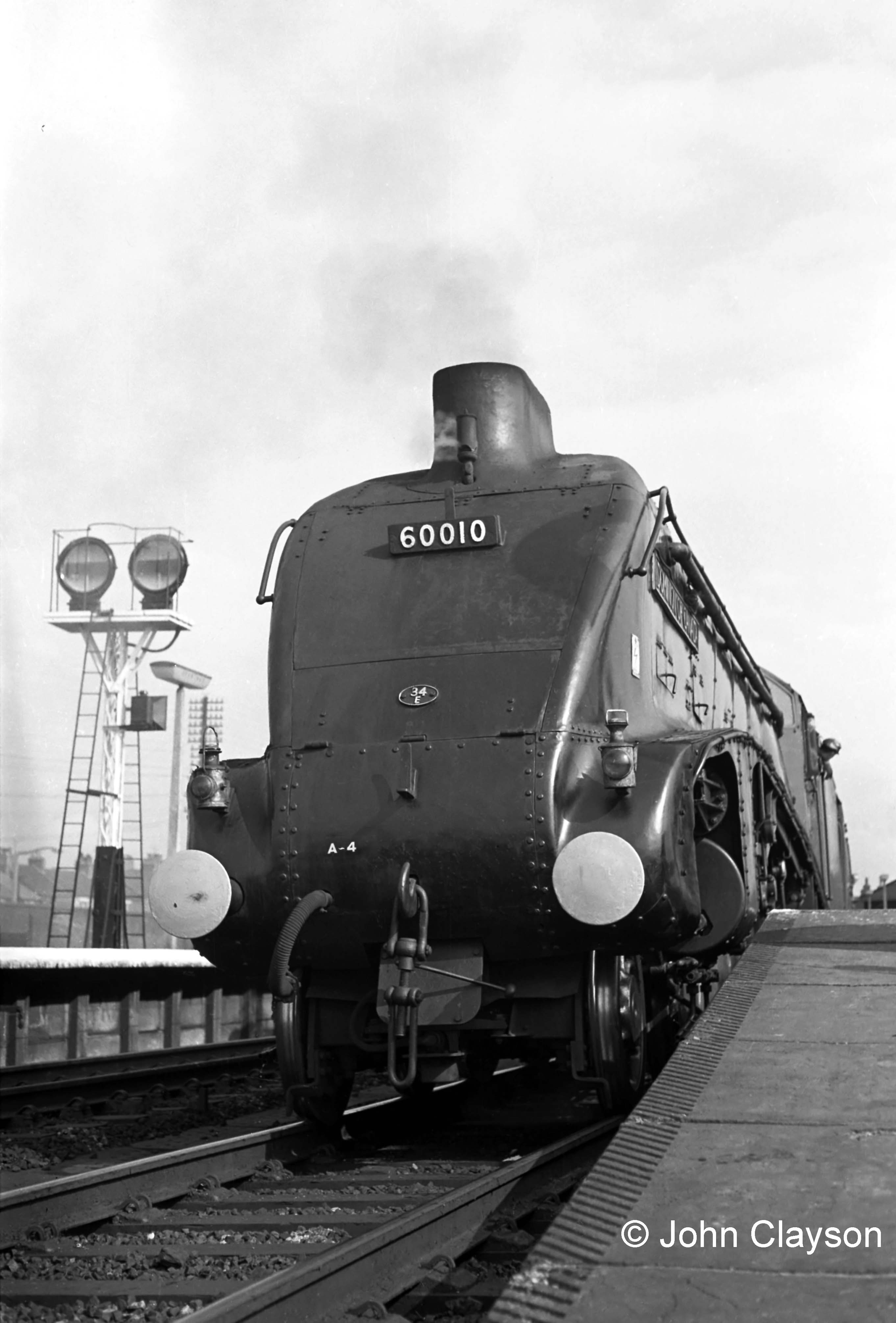
Photograph taken on 27th June 1963 by Cedric A. Clayson.
Here is a link to a photograph where the banner repeater is showing that the starting signal at Grantham Yard box is 'clear' (yellow or green) for the Main line.
Views from the Yard Box
These photographs were taken by Mick Grummitt, who worked as a Rest Day Relief Telegraph Lad in boxes at Grantham and Peterborough between 1959 and 1962. Although there was not normally a 'Tele Lad' at the Yard Box, Mick was occasionally asked to work there to help out.
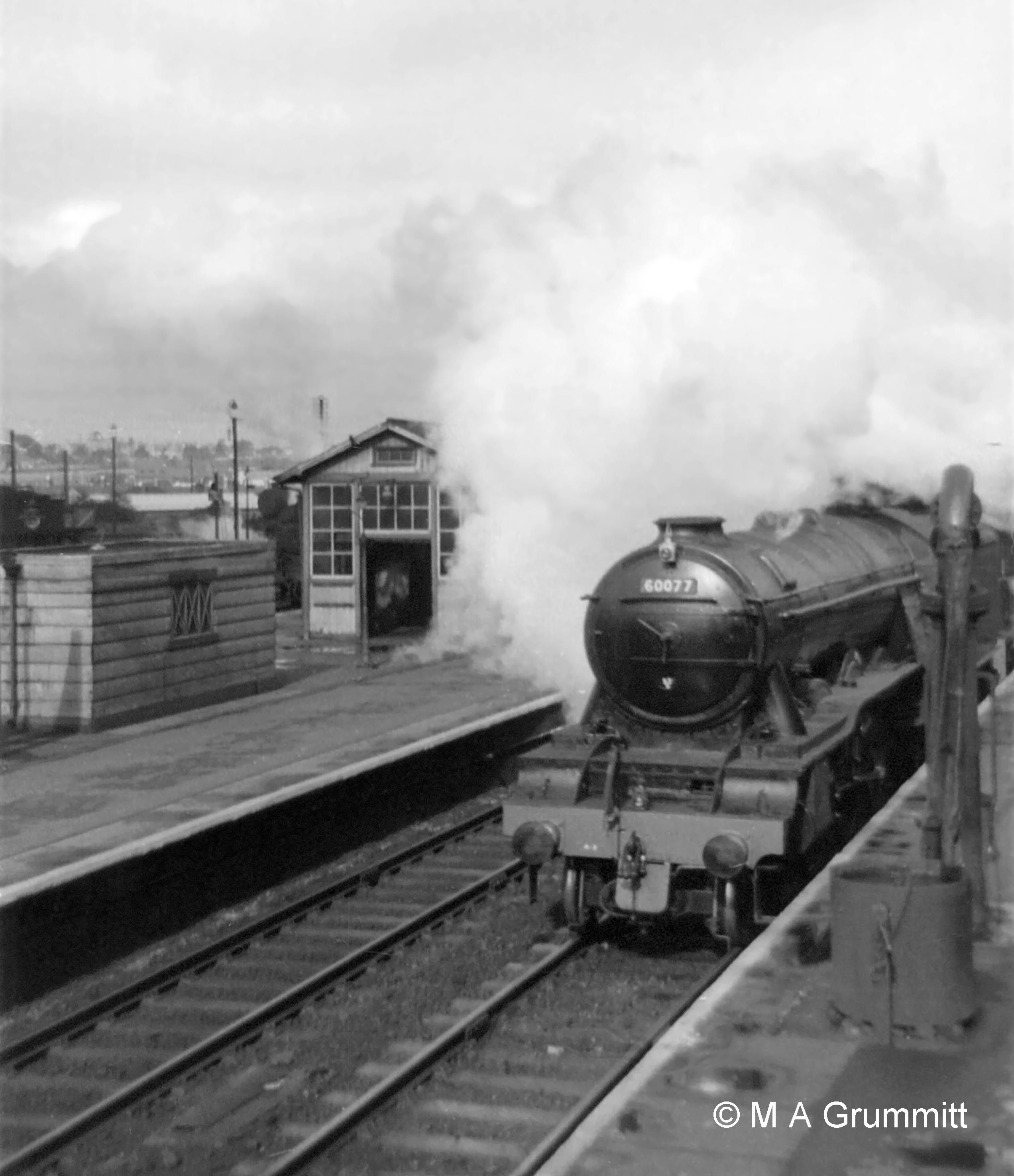
Photograph by Mick Grummitt.
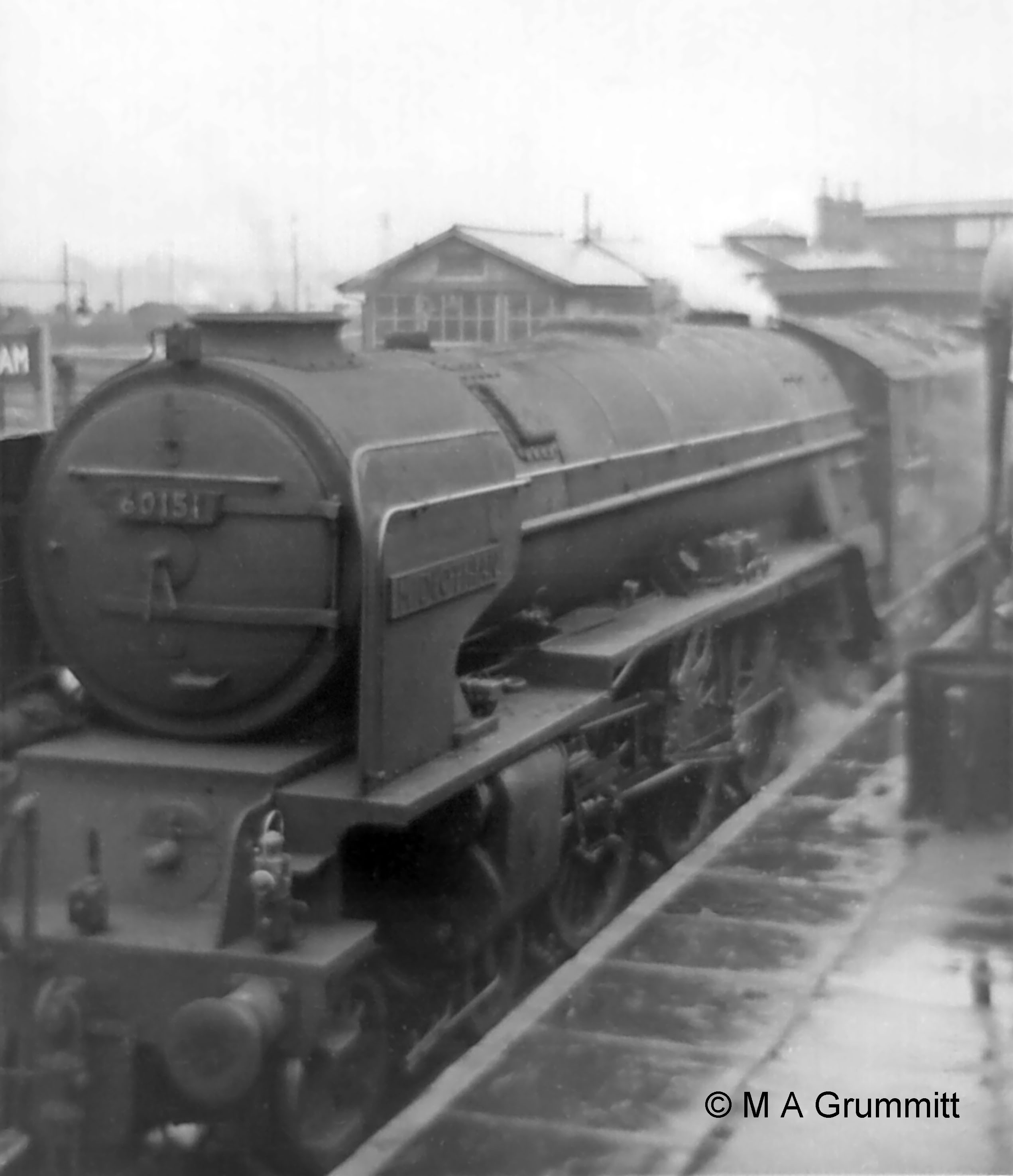
Photograph by Mick Grummitt.
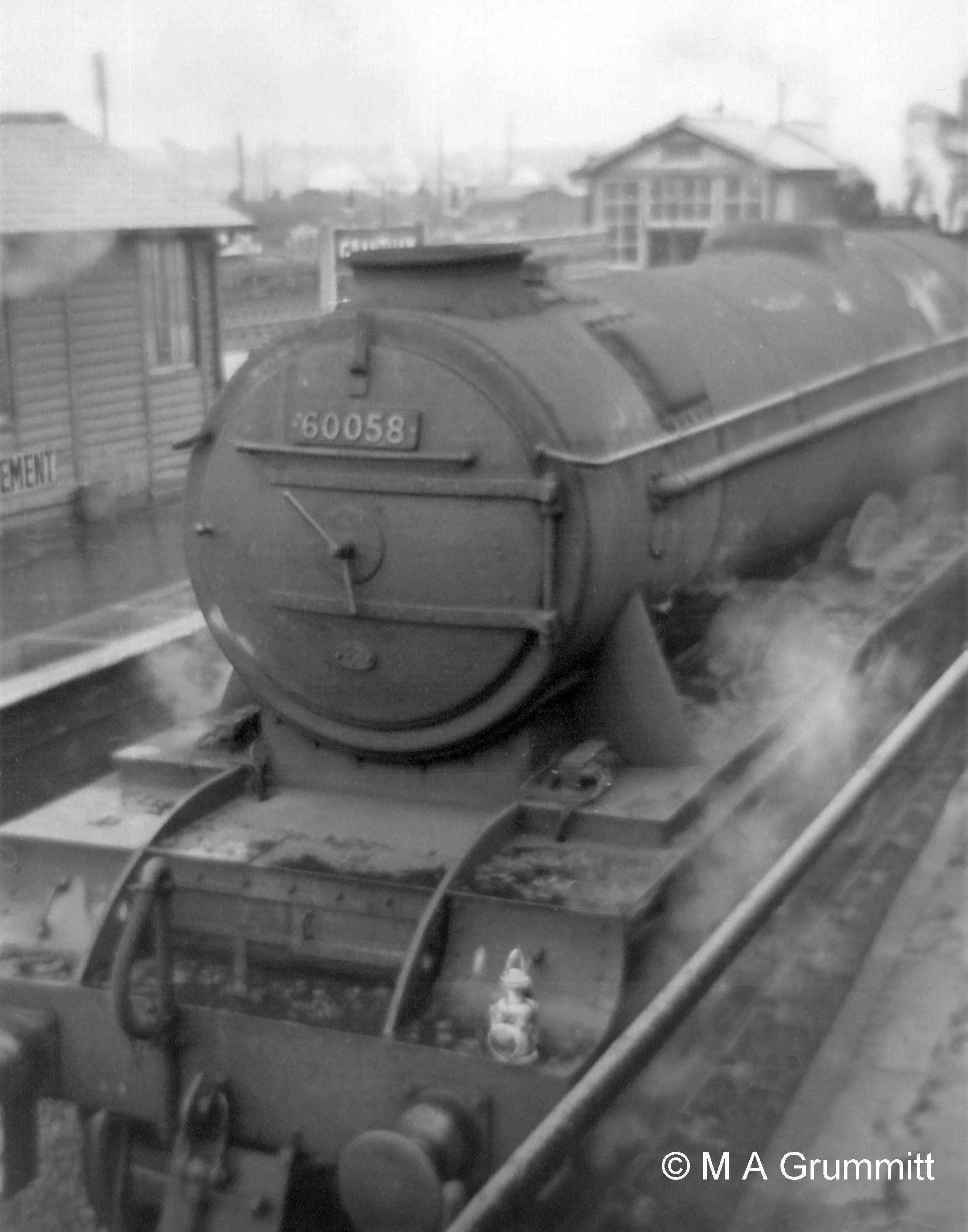
Photograph by Mick Grummitt.
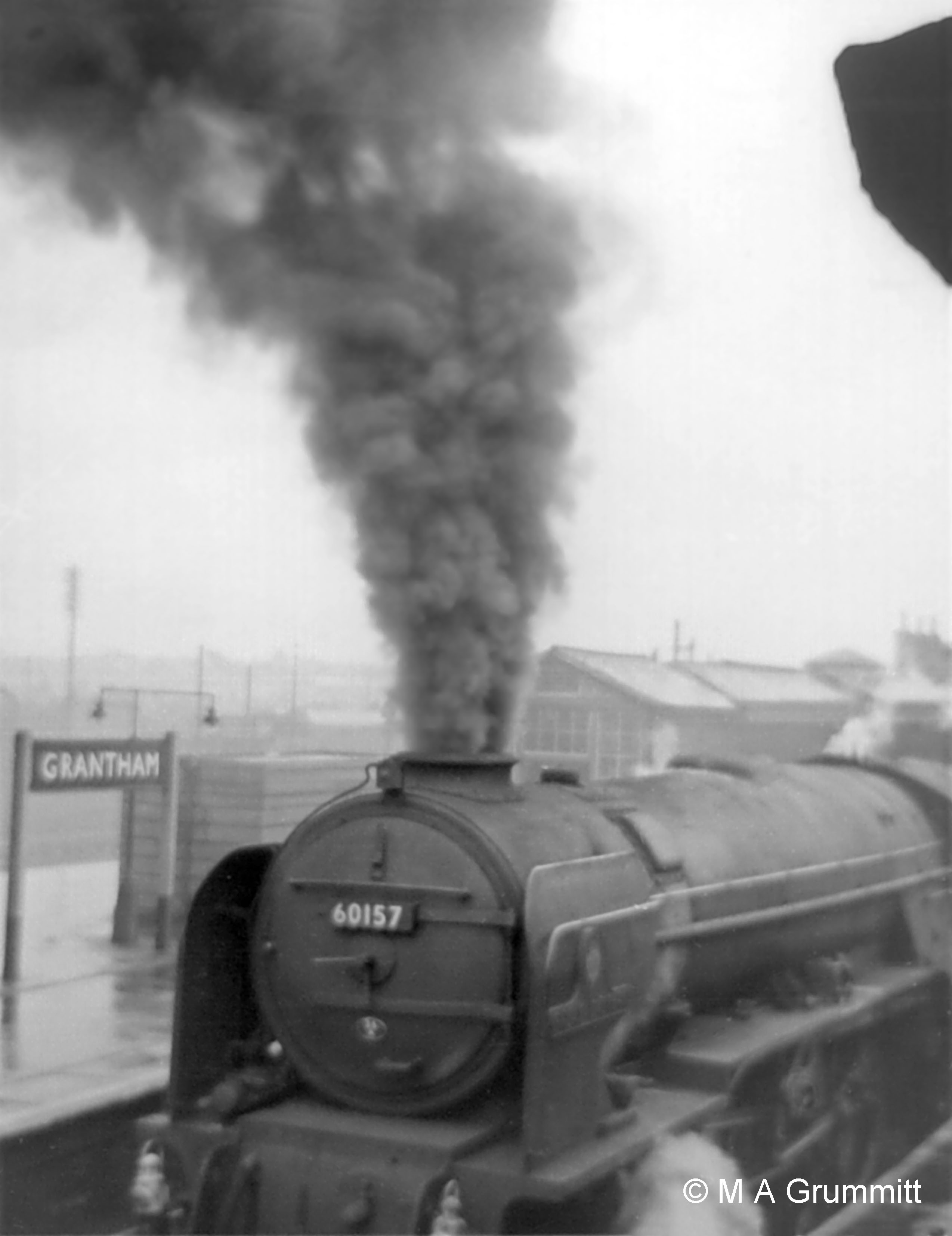
Photograph by Mick Grummitt.
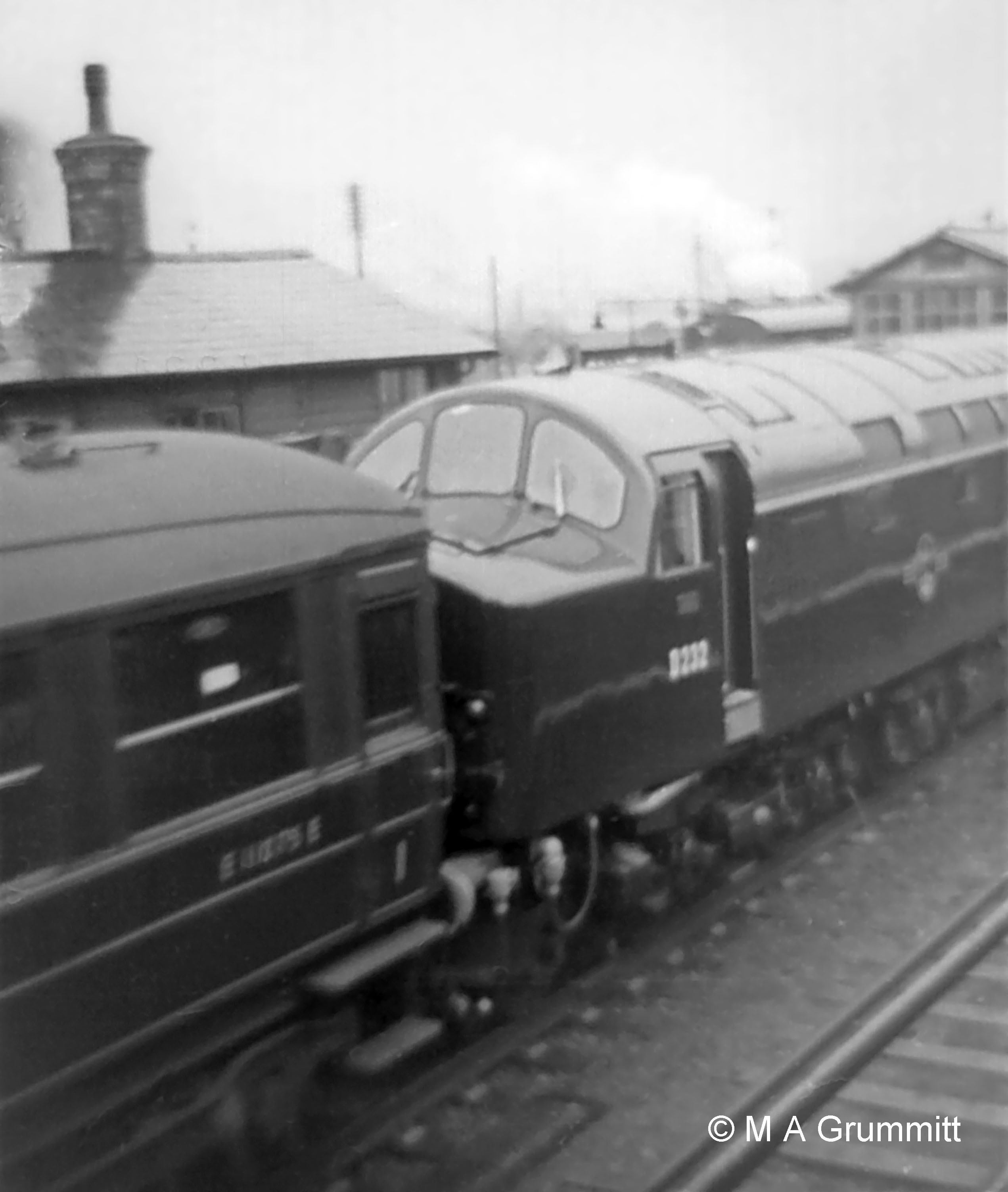
Photograph by Mick Grummitt.
The Down Main Line
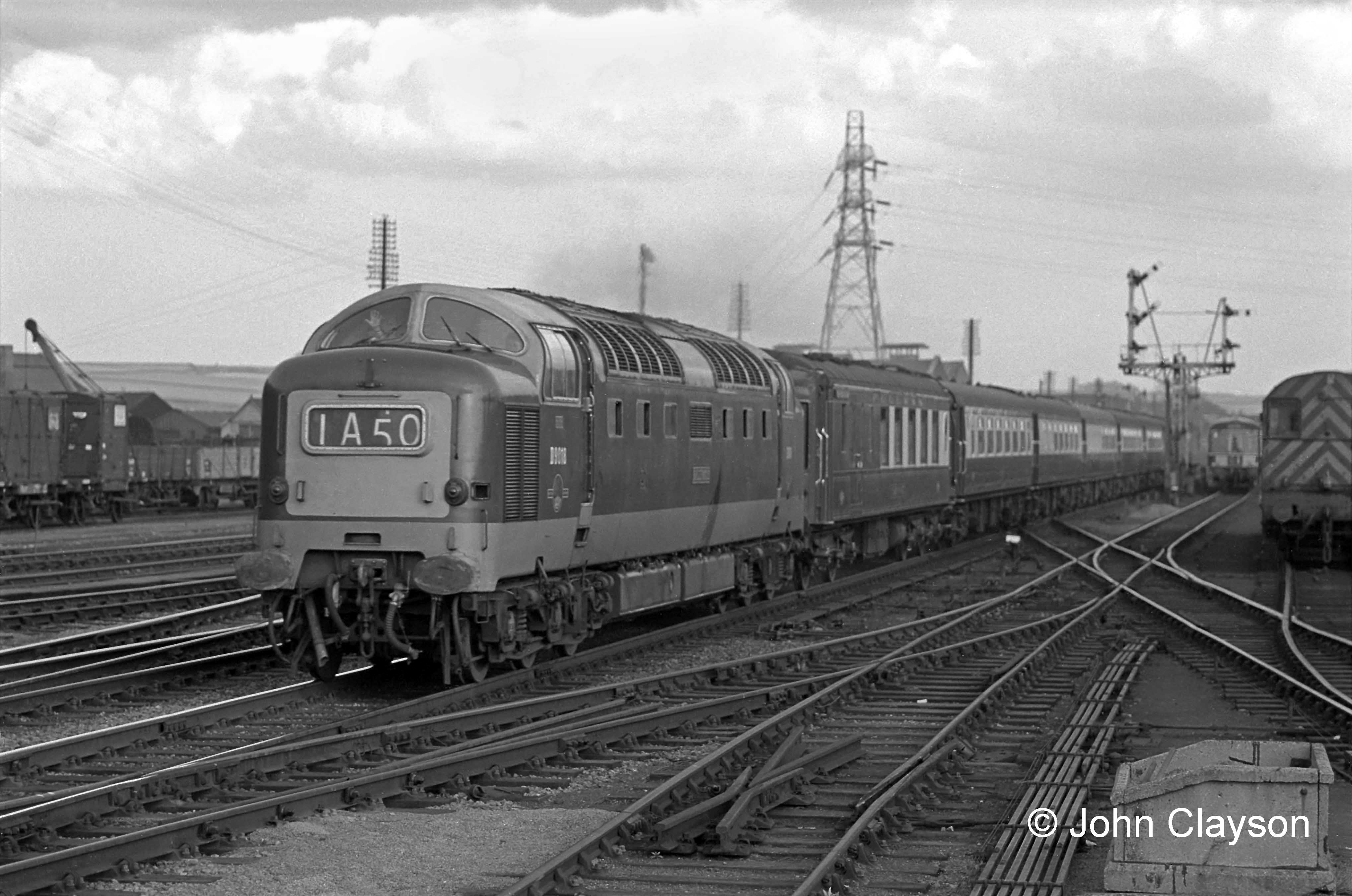
Train 1A50 was the 17:00 from King’s Cross to Newcastle, The Tees-Tyne Pullman - a luxury service between London and Tyneside for businessmen. It is hauled by ‘Deltic’ locomotive No.D9018 Ballymoss.
Photograph by Cedric A. Clayson.
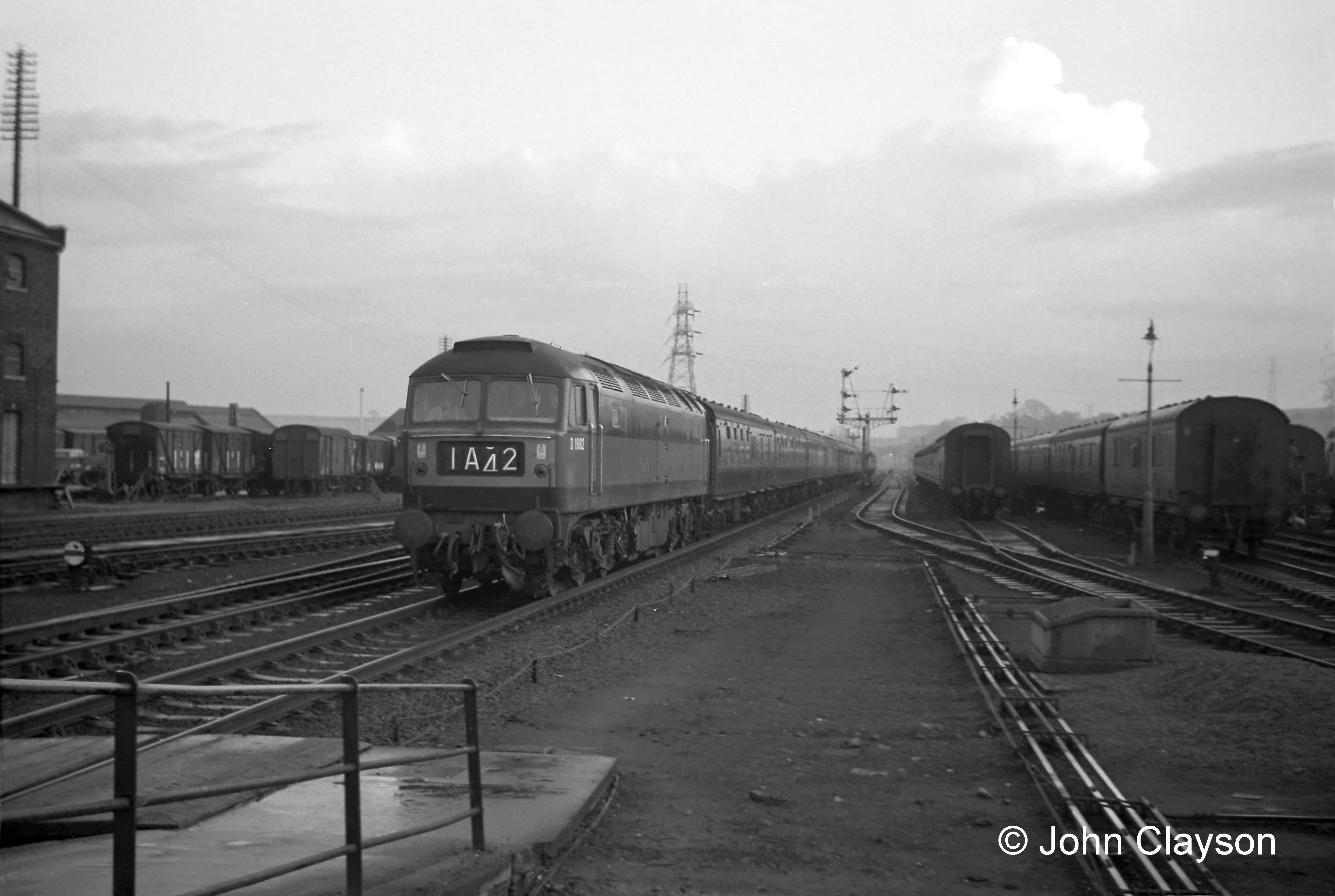
No.1 and No.2 carriage sidings still appear to be fully occupied.
Train 1A42 was the 3pm departure from King's Cross for Newcastle, hauled on this occasion by Brush Type 4 locomotive No.D1982.
Photograph by John Clayson.
The Western Platform and Carriage Sidings
Here is a link to a photograph of one of Grantham's carriage shunt pilot locomotives, taken in 1957. The connections between the western platform line in the left foreground and the carriage sidings were worked by the Yard Box. Shunter Gilbert Needham is walking beside the coaches.
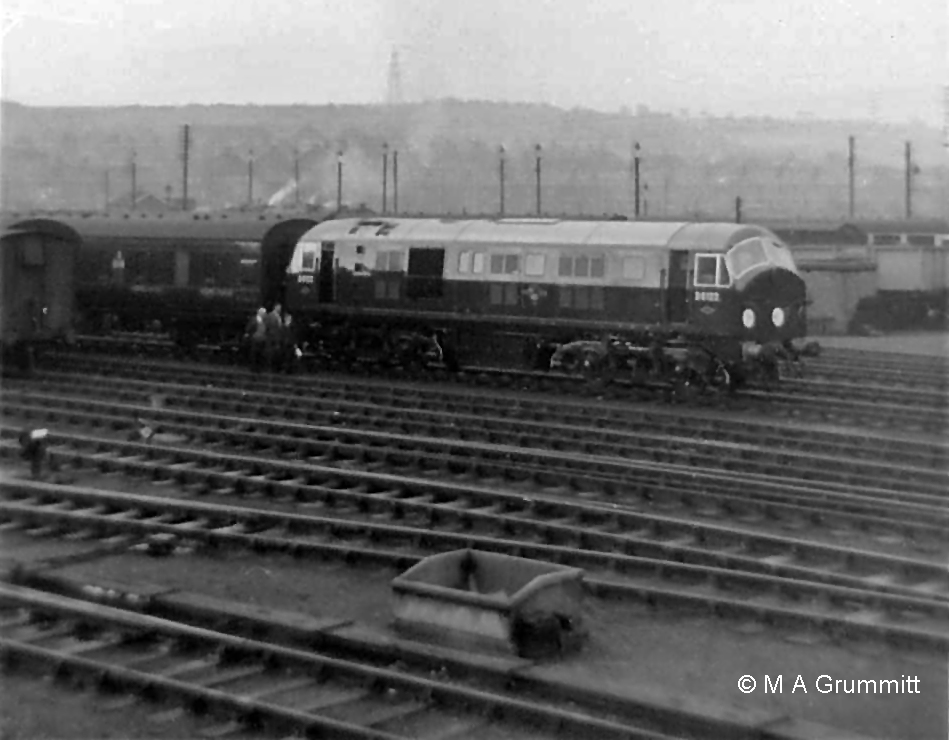
o the spur into the dock at the end of the Down platform
o the Down Slow line (partly obscured by the concrete bunker)
o the north end of carriage sidings 2, 3, 4 and 5 (some stored roling stock being visible on the left)
o the Up and Down Goods line (not signalled by the Yard Box), on which the train is standing.
The locomotive is brand new Type 2 diesel electric No. D6122 on a trial run from Doncaster to Grantham. Mick Gummitt tells us "It had just run round its train of empty stock ready to go back to Doncaster - hence all the attention by the inspectors."
These locomotives didn't normally operate in the Grantham area. D6122 went into service at Ipswich in the second half of 1959, soon after this trial trip.
They were not the most reliable machines. All 38 initially sent south (to Hornsey, Stratford and Ipswich) returned during 1960 to Scotland, where they had been built, to see out their relatively short service lives.
Photograph by Mick Grummitt.
Here is a link to a photograph of the Western platform taken on 17th May 1962. On the right is the platform starting signal. Below it on the same post is a disc signal which the Yard Box signalman has pulled 'off' for a shunting move, either to allow the locomotive to detach and run round the coaches for the return trip, or to draw forward with the coaches into the carriage sidings to clear the platform for the next arrival. There is a view of the front of this signal in the photograph below.
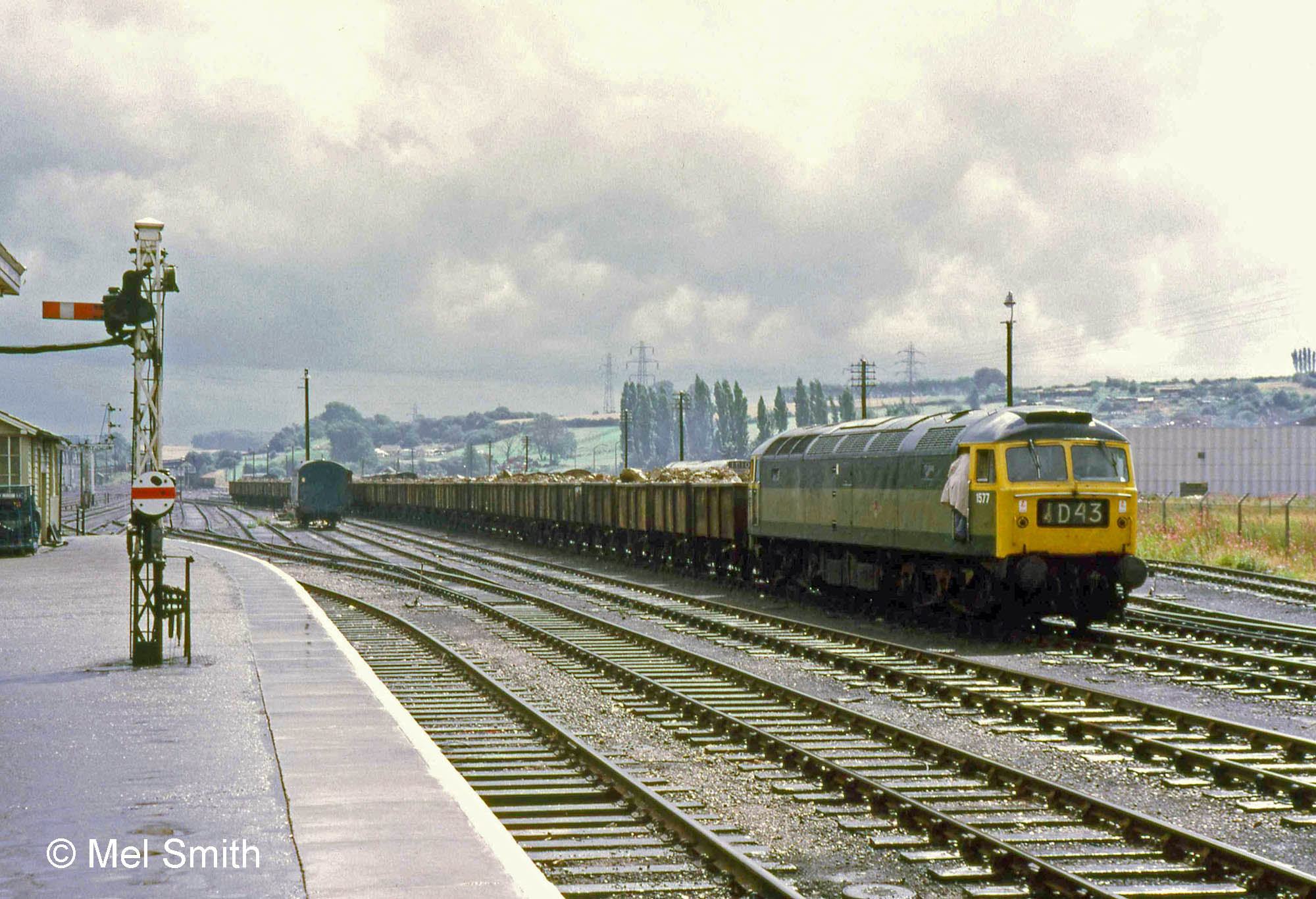
The carriage sidings are virtually unoccupied. Class 47 No.1577 has charge of an ironstone train on the Up and Down Goods line.
Photograph by Mel Smith.
Forward to Grantham Yard signal box - people and incidents
Back to the Grantham Yard Signal Box index page
Copyright note: the article above is published with the appropriate permissions. For information about copyright of the content of Tracks through Grantham please read our Copyright page.

